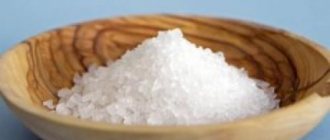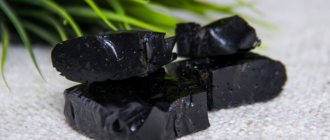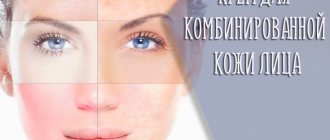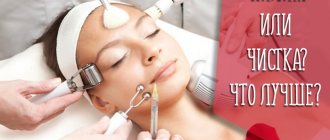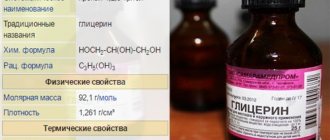Hyperkeratosis is a dermatological disease characterized by a layering of keratinized and non-exfoliated epidermal cells and thickening of the skin. Pathology can develop anywhere, but is most often diagnosed on the face. Features of hyperkeratosis : slow development, long-term absence of pronounced symptoms, maintaining general health within normal limits.
The skin may react to such a violation with redness, itching in certain areas, and visible peeling. Diagnosis of hyperkeratosis is almost never timely, but this does not apply to the face due to constant monitoring of its condition. Dermatologists still cannot give an exact answer as to what is the cause of facial hyperkeratosis.
Sometimes hyperkeratosis is congenital. This becomes clear in the first days of the child’s life, and the parents are immediately informed about it. But most often the disease begins to develop against the background of:
- metabolic disorders (metabolic process) at the cellular level,
- presence of human papillomavirus in the body,
- hormonal imbalance, when there is insufficient estrogen production,
- pronounced signs of facial skin aging,
- diseases of the vascular system, diabetes, various types of lichen and psoriasis.
Often the problem under consideration arises in the absence of any reasons, against the background of general good health. And there are provoking factors:
- Lack of vitamins in the body. Especially often, facial hyperkeratosis develops with a reduced supply of vitamins A, C and D to the dermal cells.
- Long-term use of hormonal medications. This is especially common among girls and women who prefer to protect themselves from unwanted pregnancy with hormonal pills and suppositories. Under their influence, epidermal cells begin to renew too quickly; the old ones simply do not have time to exfoliate and cover the skin like a shell.
- Psycho-emotional problems. Hyperkeratosis develops against the background of a pronounced lack of vitamin B (under the influence of stress it simply burns out) and, as a consequence, rapid age-related changes in the dermis at the cellular level.
- Poor nutrition, violation of drinking regime. Consumption of too fatty foods, a passion for alcoholic beverages, hot and spicy, smoked and pickled foods, refusal or sharp limitation of fermented milk drinks on the menu, but the presence of sweets, desserts and strong coffee in it - all this leads to disruption of the intestines, which will definitely affect on the condition of the skin.
- Violation of facial skin care rules. We are talking about insufficient hydration of the dermis, lack of protection from direct sunlight, and irregular cleansing of the skin.
According to statistics, hyperkeratosis of the facial skin is more often diagnosed with excessively dry, thinned skin.
Types of hyperkeratosis:
- Follicular . “Goose bumps” manifests itself as small reddened bumps on large areas of the skin. Epidermal scales, which have already become keratinized but not exfoliated, accumulate at the point of hair growth (follicle) and surrounding tissues. Every lump can become infected. If this happens, then the development of pyoderma is possible, a skin disease characterized by the presence of purulent contents in pathological foci.
- Warty . Formations and skin growths appear on the face, which are very similar to warts. But hyperkeratotic lesions become crusty and crack.
- Lenticular . Most often it affects the edge of the lower lip; the external signs of the disease are similar to herpes. Lenticular hyperkeratosis can be distinguished by the characteristics of the spots: they are distinctly red, slightly depressed and do not exceed a diameter of 2 cm.
- Seborrheic . Pink or yellowish round spots appear, which are covered with an easily peelable greasy crust. If there is no treatment, the spots thicken and begin to rise above the general surface of the skin of the face.
The classification of hyperkeratosis includes diffuse, disseminated and actinic types. The first two are rarely diagnosed, but actinic occurs only when pronounced age-related changes already exist. The spots are irregular in shape, brown in color and appear on those parts of the face that are most often exposed to sunlight.
A person can be diagnosed with several types of disease at once. Warty hyperkeratosis is considered the most dangerous , because with a long course and lack of treatment, formations can degenerate from benign to malignant.
Drug treatment helps at an early stage of development. These are oil solutions of vitamins A and E, aromatic retinoids and tretionin (it can be included in various products). In advanced cases, ointments are used that contain glucocorticosteroid hormones: Prednisolone, Flucinar, Dermovate, Beloderm and others.
The preparations normalize and stabilize the production of natural keratin, accelerate the process of exfoliation of already keratinized particles of the epidermis, and promote the healing of cracks and wounds.
The use of exfoliating creams that contain fruit acids often has a positive effect. They have a fairly aggressive effect on the cells of the dermis, so using them independently is undesirable.
Drugs such as Actitretin are used only for excessive dry skin and extensive lesions. In such situations, an oil solution of retinol helps to reduce the intensity of the disease; it is used to treat pathological lesions and taken orally.
Folk remedies will never be a panacea and should not replace drug treatment, but they will help relieve inflammation, reduce redness, and speed up and improve the process of exfoliation of dead skin particles. The most effective will be the following:
- Fermented milk mask . Rub the fatty cottage cheese through a sieve, mix with cream or homemade sour cream and place on cleansed facial skin. After 25 minutes, rinse everything off with warm water, dry and lubricate the skin with moisturizer.
- Beetroot compress . Using a fine grater or in a blender, grind the beets to a mushy state, squeeze lightly and add a little vegetable oil to the mixture (based on 1 tablespoon of beets = ½ teaspoon of oil). Place the finished mixture on a gauze bandage and place it on your face. The procedure takes 30 minutes, after which it is necessary to use a rich cream with a moisturizing effect.
- Raw potato mask . You need to grate the vegetable on a fine grater (it’s better to take new potatoes), squeeze lightly and spread in a thick layer over the surface of your face for 30 minutes. This mask dries the skin very much, so after the procedure you need to take warm sea buckthorn oil and wipe the skin with it.
The listed recipes can be used once every 2-3 days and not all at once , but by choosing one. The duration of treatment is not limited. Additionally, it is recommended to wipe your face daily with aloe juice, wash your face with decoctions of chamomile or calendula flowers (for 1 glass of water, 1 tablespoon of plant material, boil in a water bath for 10 minutes, leave for 30 minutes and strain, before use, dilute in 200 ml of warm water 2 tbsp concentrate).
Cosmetic procedures (suitable at the initial stage):
- Chemical peeling . It is carried out no more than once every 2 weeks, using various acidic compounds.
- Mesotherapy . It consists of introducing special cocktails based on nutrients, vitamins and hyaluronic acid under the facial skin.
- Dermabrasion . This is the name of mechanical peeling, which allows you to remove dead skin areas using grinding. The procedure is very aggressive, requiring specific preparation and a long rehabilitation period.
The most effective cosmetic procedure against hyperkeratosis is laser peeling . Only damaged areas of the skin are treated with rays. This is a fairly serious procedure that has many contraindications and is characterized by pain, the need for several sessions and a long recovery period.
Specific skin care includes:
- Apply scrubs at least once a week. Scrubbing is carried out only on steamed skin, after which it is necessary to use moisturizing creams.
- Cleanse your face of decorative cosmetics daily. If possible, such means should not be used at all. If you have to apply makeup, you need a base for it, specific milk, and lotions for cleansing.
- Every 2-3 days, use masks from the “folk remedies” category based on glycerin, egg yolks, honey, aloe juice, and fermented milk products.
- Use special cosmetics to protect your facial skin from sunlight, wind and frost.
- Drink 1.5 liters of water per day.
Read more in our article about hyperkeratosis of the facial skin.
Causes
The cause of keratosis can be:
- Post-traumatic healing of skin damage
- Prolonged exposure to ultraviolet light
- Lichen
- Constant rubbing of certain areas of the skin
- Exposure to skin irritants
- Erythroderma
- Excessive pressure on the skin of clothing, shoes and jewelry
- Flat feet and overweight
- Diabetes
- Psoriasis
- Puberty and menopause
- Genetic predisposition
- Hypovitaminosis
- Local allergic reactions
Treatment of keratosis of the skin
Conservative therapy is carried out to reduce the number of tumors, soften and exfoliate them. For this purpose, external keratolytic agents are used:
- Ureaderm,
- Keratosan,
- Akerat.
Vitamins A, C and E are prescribed for oral administration.
Treatment of keratosis at home with folk remedies is agreed with the doctor. It can only be used as an adjuvant therapy. Popular external remedies for keratoderma:
- Compresses with fresh aloe juice at night.
- Applications made of tar and butter (1:1).
- Treatment of areas with burdock decoction (2 tablespoons of raw material per 500 ml of water).
- Rubbing heated castor oil.
Radical methods are considered the most effective in treatment: electrocoagulation, laser removal, chemical peeling and photodynamic therapy.
The choice of one method or another depends on the type, size, and shape of the tumor.
Symptoms and types
Keratosis is often accompanied by:
- The appearance of dark brown or gray scales on the skin
- Excessive keratinization of the skin of the palms and soles
- Formation of nodes and growths
- Cracking of affected skin
- The appearance of yellowish spots on the skin, which over time transform into bumps
Based on the type of occurrence, there are 2 large groups of keratoses:
Purchased:
- Symptomatic - occurs as one of the manifestations of damage to the endocrine or nervous systems
- Professional – representatives of professions that involve frequent skin contact with irritating substances and traumatic factors get sick
- Paraoncological – occurs with cancer, affects the hands and feet
- Venereal – occurs when infected with sexually transmitted diseases
Hereditary
- Follicular keratosis is a pathology in which dead skin cells form plugs that clog the hair follicle. In this case, small nodules up to 3-4 mm in size form on the skin of the shoulders, buttocks, neck, abdomen and armpits. They may disappear spontaneously and reappear in cold weather
- Seborrheic keratoses are small brown or black benign tumors, ranging in size from 1-2 mm to 1.5-2 cm. The lesions are often flat or convex, located mainly on the chest, neck and face. The disease develops slowly, sometimes over several years. Transformation into a malignant tumor is extremely rare
- Actinic keratosis - the disease begins with the appearance of roughness, which then turns into a dense spot. The lesion is covered with scales, the color varies from flesh to brown. The skin on the face, neck and chest becomes keratinized. This form of keratosis can transform into a malignant tumor
- Keratoderma - brown-yellow layers with a purple border appear on the heels and palms. The lesions are often symmetrical, and as the disease progresses they can spread to the skin of the hands, feet, knees and elbows.
- Ichthyosis is a systemic keratosis caused by a diffuse violation of keratinization. It is characterized by the formation of small gray-black scales on the skin, tightly adjacent to each other. The skin pattern becomes very pronounced. In severe cases, the teeth, nails, eyes, cardiovascular and nervous systems are affected.
Palmoplantar keratosis
Rough skin on the fingers, toes and heels indicates another form of the disease associated with thickening of the stratum corneum of the epidermis. Main causes of pathology:
- Heredity.
- Disturbances in the functioning of the nervous and endocrine systems.
Palmoplantar keratosis - what it is and how it manifests itself:
- Rough skin on fingers and toes, soles, palms.
- There are numerous transparent and dense keratolytic nodules located symmetrically on the limbs, about 5–7 mm in diameter.
- The keratinized skin is yellow to brown to black.
- The surface of the nodules is smooth, but may have cracks.
- Atrophy of the sweat glands.
Often, keratinized skin on the fingers and toes is accompanied by lesions on the knees and elbows, keratosis of the nails and perianal area. With extensive lesions, keratinization is observed on the tongue and around the red border of the lips.
Hyperkeratotic conditions also include:
- Cracks accompanied by an inflammatory reaction. They can be superficial and deep, weeping and bleeding, reaching the layer of the dermis and subcutaneous tissue.
- Wet cracks. The reason for the formation is hyperhidrosis or prolonged exposure to shoes made of airtight materials. They are more common between the fingers and in the flexion areas of the joints.
- Dry cracks. The cause is a deficiency in the production of secretions from the sweat and sebaceous glands. Develops with fungal infections, endocrine and metabolic disorders, high physical activity, exposure to chemical and thermal irritants.
Classification
There are two types of keratosis:
- Congenital – inherited and is the most common.
- Acquired - appears under the influence of external factors. It, in turn, is divided into: primary - it appears on skin that was not previously subject to any pathologies; secondary - manifests itself together with other skin diseases or inflammations and infections.
Keratosis pilaris is a whole group of different diseases that can be divided into 3 groups:
Papular
This includes:
- Ringworm, especially affecting the head area. It can be contracted from animals or sick people.
- Morrow-Brooke syndrome which resembles acne.
- Hereditary Flegel's disease, the first signs of which appear only after 40 years.
- Monilectrix, a disease that cannot be cured. It is characterized by hair loss and thinning of the hair root.
Atrophying
It is characterized by:
- Redness of the skin with the formation of scars in the superciliary part.
- spinosa , during which partial hair loss occurs.
- Siemens keratosis mainly appears in boys in the first months of life.
- atrophoderma , which mainly affects the cheeks and appears as a rash. It leaves small scars.
Vegetative
Its frequent representatives are:
- disease , which covers the skin with small cone-shaped nodules.
- Porokeratosis of Mibelli is characterized by small rashes on the arms and legs.
A characteristic feature of diseases belonging to groups 1 and 2 is imperceptible or inconspicuous development, which then leads to necrosis of the skin in the affected area.
Causes of hyperkeratosis of the facial skin, provoking factors
Dermatologists still cannot give an exact answer as to what is the cause of facial hyperkeratosis, but most often the disease begins to develop against the background of:
- metabolic disorders (metabolic process) at the cellular level,
- the presence of human papillomavirus in the body (symptoms may be absent, the patient is simply a carrier),
- hormonal imbalance, more often in women, when there is insufficient estrogen production,
- pronounced signs of facial skin aging,
- diseases of the vascular system, diabetes, various types of lichen and psoriasis.
Often the problem under consideration arises in the absence of any reasons, against the background of general good health. And in this case, doctors will identify provoking factors:
- Lack of vitamins in the body. Especially often, facial hyperkeratosis develops with a reduced supply of vitamins A, C and D to the dermal cells. The complex of these substances ensures a normal supply of oxygen and nutrients to the dermis, support for vascular health, strengthening the immune system, and regular processes of renewal of epidermal cells (regeneration).
- Long-term use of hormonal medications. This factor is especially often triggered in girls and women who prefer to protect themselves from unwanted pregnancy with hormonal pills and suppositories. Under their influence, epidermal cells begin to renew too quickly; the old ones simply do not have time to exfoliate and cover the skin like a shell.
- Psycho-emotional problems. Stress, depression, sudden mood swings, irritation - all this has an extremely negative impact on your overall health. If we consider this factor only in relation to hyperkeratosis, then the disease will develop against the background of a pronounced lack of vitamin B (under the influence of stress it simply burns out) and, as a consequence, rapid age-related changes in the dermis at the cellular level.
- Poor nutrition, violation of drinking regime. Consumption of too fatty foods, a passion for alcoholic beverages, hot and spicy, smoked and pickled foods, refusal or sharp limitation of fermented milk drinks on the menu, but the presence of sweets, desserts and strong coffee in it - all this leads to disruption of the intestines (dysbacteriosis), which will definitely affect the condition of the skin.
- Violation of the rules of facial skin care. We are talking about insufficient hydration of the dermis, lack of protection from direct sunlight, and irregular cleansing of the skin.
According to statistics, hyperkeratosis of the facial skin is more often diagnosed with excessively dry, thinned skin. Owners of this type of dermis must constantly monitor its condition and carry out preventive measures.
Treatment and care for hyperkeratosis
Symptoms of facial hyperkeratosis are a reason to consult a dermatologist. Only a doctor can make an accurate diagnosis and find out the reason for its development. If the last point is established, it will facilitate the task of treating the disorder in question. It will be possible to remove the provoking factor from a person’s life and achieve a significant improvement in the condition of the facial skin.
Drug treatment
If the disease was diagnosed at an early stage of its development, then oil solutions of vitamins A and E, aromatic retinoids and tretionin (it can be part of various products) will be effective.
In advanced cases, it becomes appropriate to use ointments that contain glucocorticosteroid hormones: Prednisolone, Flucinar, Dermovate, Beloderm and others like that. These drugs normalize and stabilize the production of natural keratin by dermal cells, accelerate the process of exfoliation of already keratinized particles of the epidermis, and promote the healing of cracks and wounds.
The use of exfoliating creams that contain fruit acids often has a positive effect. These are similar to scrubs; they have a rather aggressive effect on the cells of the dermis and therefore their independent use is undesirable; a dermatologist or cosmetologist must select a cream and a scheme for its use.
Drugs such as Actitretin are used only for excessive dry skin and extensive lesions of the facial skin. In such situations, an oil solution of retinol helps reduce the intensity of the disease; it is used both for treating pathological lesions and for oral administration.
There are no medications that completely cure facial hyperkeratosis. The disease is considered chronic; the doctor can only select therapy to reduce symptoms.
Folk remedies
Even official medicine agrees that folk remedies must be present in the treatment of the disease in question. They will never become a panacea and should not replace drug treatment, but they will help relieve inflammation, reduce redness, speed up and improve the process of exfoliation of keratinized particles of the epidermis. The following remedies will be most effective:
- Fermented milk mask . Rub the fatty cottage cheese through a sieve, mix with cream or homemade sour cream to a paste and spread on previously cleansed facial skin. After 25 minutes, rinse everything off with warm water, dry and lubricate the skin with moisturizer.
- Beetroot compress . On a fine grater or in a blender, you need to grind the red beets to a paste-like state, squeeze lightly and add a little vegetable oil to the mixture (at the rate of 1 tablespoon of beets = ½ teaspoon of oil). Place the finished mixture on a gauze bandage and place it on your face. The procedure takes 30 minutes, after which it is necessary to use a rich cream with a moisturizing effect.
- Raw potato mask . You need to grate the vegetable on a fine grater (it’s better to take new potatoes), squeeze lightly and spread in a thick layer over the surface of your face for 30 minutes. This mask dries the skin very much, so after it is washed off, you need to take warm sea buckthorn oil and wipe the skin with it.
The listed recipes can be used once every 2-3 days and not all at once, but by choosing one. The duration of treatment is unlimited.
Additionally, it is recommended to wipe your face daily with aloe juice, wash your face not with ordinary water, but with decoctions of chamomile or calendula flowers (for 1 glass of water, 1 tablespoon of plant material, boil in a water bath for 10 minutes, leave for 30 minutes and strain. Before use, you need 200 ml dilute 2 tablespoons of concentrate with warm water).
Watch this video about traditional methods of treating follicular hyperkeratosis:
Cosmetology procedures
If facial hyperkeratosis is at the initial stage of development, the doctor may prescribe some procedures that are carried out in beauty salons:
- Chemical peeling . It is carried out no more than once every 2 weeks, using various acidic compounds. The procedure requires special attention because there is a high risk of damage to thin and too dry skin. After chemical peeling, you need to constantly and fully moisturize the dermis.
- Mesotherapy . It consists of introducing special cocktails based on nutrients, vitamins and hyaluronic acid under the facial skin. The specific composition is selected on a strictly individual basis. The result of mesotherapy is the retention of moisture in the cells of the dermis, reducing the intensity of hyperkeratosis.
- Dermabrasion . This is the name of mechanical peeling, which allows you to remove dead skin areas using grinding. The procedure is very aggressive, requiring specific preparation and a long rehabilitation period.
The most effective cosmetic procedure against hyperkeratosis is laser peeling. Only damaged areas of the skin are treated with rays; the depth of exposure is selected individually. This is a fairly serious procedure that has many contraindications and is characterized by pain, the need for several sessions and a long recovery period.
Even if the main symptoms of hyperkeratosis are removed and the facial skin is restored, you need to constantly take specific care of it:
- Apply scrubs at least once a week. They will cleanse the dermis of already keratinized particles and provide a path for nutrients to penetrate into the cells. Scrubbing is carried out only on steamed skin, after the mandatory use of moisturizing creams.
- Cleanse your face of decorative cosmetics daily. If possible, you should not use such products at all, but if you have to apply makeup, then you also need a base for it, specific milk, and lotions for subsequent cleansing.
- Every 2-3 days, use masks from the “folk remedies” category based on glycerin, egg yolks, honey, aloe juice, and fermented milk products. You will first need to conduct an allergy test to prevent deterioration of the skin condition after the procedure.
- Use special cosmetics to protect your facial skin from sunlight, wind and frost.
Dermatologists say that introducing facial hyperkeratosis into a state of long-term remission is impossible without diet correction. It is necessary to review the menu and introduce more plant foods, citrus fruits, milk and fermented milk products into it. You should definitely drink at least 1.5 liters of clean water per day, this will keep water-lipid metabolism in the cells of the dermis within normal limits. In spring and autumn you need to take a course of vitamin therapy.
We recommend reading about salicylic acid peeling. From the article you will learn about indications and contraindications for peeling, methods of peeling, and skin care after.
Read more about the benefits of diamond facial peeling here.
Facial hyperkeratosis is an extremely unpleasant disease, but quite manageable. Finding the cause of its development, selecting drug therapy and recommendations for the use of folk skin care products is the dermatologist’s paraphrase. A specialist will be able to stop the spread of hyperkeratosis, the intensification of its symptoms and put the disease into long-term remission.
Diagnostics
Diagnosis is carried out by a dermatologist. To make a diagnosis, you do not need to take any tests or undergo laboratory tests.
Diagnosis is made through a thorough examination of the skin and identification of small, dry and rough bumps of equal size. On the face, keratosis must be distinguished from acne.
After the examination, the reasons that influenced the onset of the disease should be identified, and after that, treatment is prescribed, taking into account the individual characteristics of the body. Very often, to identify the causes, you need to undergo examination and tests.
What is hyperkeratosis on the face, symptoms
Hyperkeratosis is a dermatological disease characterized by a layering of keratinized and non-exfoliated epidermal cells and thickening of the skin. Pathology can develop anywhere, but is most often diagnosed on the face. Features of hyperkeratosis: slow development, long-term absence of pronounced symptoms, maintaining general health within normal limits.
The skin may react to such a violation with redness, itching in certain areas, and visible peeling. Diagnosis of hyperkeratosis is almost never timely, but this does not apply to the face due to constant monitoring of its condition.
In official medicine, there are many recorded cases where hyperkeratosis is congenital. This becomes clear in the first days of the child’s life, and the parents are immediately informed about it. But most often the problem arises against the background of the presence of numerous provoking factors.
We recommend reading about the treatment of cutaneous horns. From the article you will learn about the causes of the appearance of cutaneous horns, types of pathological formations, diagnosis of growths, and treatment methods.
And here is more information about the treatment and prevention of lentigo.
